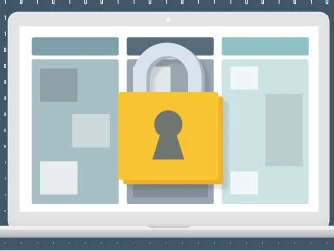6 Tips for Securing Your Patients' Electronic Protected Health Information
February 16, 2017
3 min. read

Unfortunately, there is no simple solution to protecting the privacy and security of your patients electronic protected health information (ePHI). As the use of technology in the workplace constantly evolves, security only gets more complicated.
Here are six tips to help protect your patients ePHI:
1. Use Data Encryption
Lost or stolen equipment is the primary cause of information security breaches. It's essential to encrypt your devices for a virtual get out of jail free card. While it won't prevent loss or theft, proper encryption will keep protected health information out of harms way.
2. Secure Texts and Emails
Patients may send unprotected health information to you. Once you receive it, it is your responsibility to ensure that it is adequately protected. Keep personal and work accounts separate, and install data encryption to keep your patients information safe.
3. Avoid Email Scams
Be familiar with warning signs to avoid falling victim to phishing schemes and other common email scams. Watch out for some of these clues:
Unfamiliar senders
Reply-to email addresses different from the sender
Urgent calls to action
Requests to disclose sensitive information
4. Post with Caution
With millions of people on social networks and professional blogs, its not surprising that social media based information security violations are on the rise. Remember that even well-meaning posts about patients without their authorization violate your patients right to privacy. This includes posting gossip about patients (even if their name isnt included) and sharing photos without a patients consent.
5. Choose and Remember Strong Passwords
Its hard to believe, but passwords like 12345 or password are still commonplace. Reduce the risk of an information security breach by choosing and remembering strong passwords. Its easy enough to create a strong password - just mash your hands against your keyboard - but try using the first digits of an easy to remember phrase to create a memorable one.
6. Stay Up-to-Date on Your HIPAA Security
You wouldnt assess a patient at intake and then never revisit that assessment, right? Similarly, you should regularly reassess the risk of potential security breaches to ensure that your patients information is protected. HIPAA security is an ongoing process.
Medbridge is here to help! While technical safeguards are a key element to ensuring the safety and security of your patients information, the foundation is in training and awareness. Our suite of courses ensure you and your facility have the tools and information to remain in compliance, and focus on what you love: providing quality patient care.
Available courses include:
Below, watch a short clip from our HIPAA: Information Security course on how to adequately secure mobile devices.





